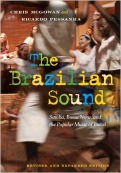Brazil, as we know it today, could not exist without Africa. From the African influence on the Portuguese spoken in Brazil, to the country’s cuisine, music, dance, religious traditions, and ways of life, African cultural legacies have made an immeasurable and ever-evolving contribution to Latin America’s largest nation.
These legacies have often remained closer to their original African sources in Brazil than they have in North America. The sheer numbers of African arrivals and their dense concentration in coastal cities, a relatively more tolerant attitude of the Portuguese toward the cultures of their captives (as compared with the English), the role of the Catholic Church, and the existence of runaway slave colonies all contributed to the survival and flourishing of African culture in Brazil.
The Brazilian nation itself was built on the backs of countless African captives and their descendants. An estimated 3.6 million Africans were imported to Brazil as slaves by the Portuguese starting in the 1530s and ending in the 1850s. Today, Brazil is home to the largest population of people of African descent outside of Africa.
Slavery began in Brazil during the colonial period, probably in 1532, and lasted until 1888. Most Africans imported to Salvador, Bahia, came from West Africa in the latter 16th Century; from Angola in the 17th Century; from the Gold Coast (which became Ghana) from about 1700 to 1770; and from Nigeria and Benin from 1770 until the 1850s.
The enslaved Africans came from a variety of cultures and societies. Most practiced traditional African religions, but some were Muslim. The two predominant African cultures represented in Brazil are the Yoruba and Fon of Nigeria and Benin (formerly known as Dahomey), whose influence dominates in the Candomblé religion; and Bantu Africans from the Kongo-Angola region who gave birth to the martial art/dance of Capoeira and the samba, among other manifestations.
Ewe and Ashanti are also represented in Brazil, as are the Muslim Tapas, Mandingos, Fula, and Hausa — all of whom were taken from the Gold Coast, Nigeria, and neighboring areas.
The imported Africans crossed the Atlantic in brutally crowded conditions, and many died during the trip. At first they worked in the sugar plantations of Northeast Brazil. From the 1690s onward, they also labored in the gold and later the diamond mines of Minas Gerais, and before the end of the colonial period (i.e., before 1822) in the coffee plantations of São Paulo and Rio de Janeiro States as well.
Africans and Afro-Brazilians resisted slavery by forming runaway colonies known as quilombos. The most famous of these was the Quilombo dos Palmares, which had a population in the thousands and flourished in the interior of the Northeast for several decades during the 17th Century until the authorities destroyed it in 1695. The leader of Palmares was a mythic figure named Zumbi, whose birthday has been a national holiday in Brazil since 1995 — one sign of the growing black consciousness movement in Brazil.
Intermingling among indigenous Brazilians, Europeans, and Africans during the colonial period (and beyond) created the foundation for a thoroughly mixed-race nation. It wasn’t until the 1930s, however, that Brazilian elites began to appreciate the mestiço nature of their country. This change in attitude can be credited in large measure to the 1933 book, Casa Grande e Senzala (The Masters and the Slaves), by sociologist Gilberto Freyre. Freyre’s landmark work helped Brazilians see how the African and indigenous contributions to their culture helped Brazil stand out among nations. But it also facilitated a contested notion that persists today of Brazil as a “racial democracy.” While interracial dating and marriage is commonplace in Brazil, and people of various colors tend to interact freely in many social situations, racism does persist in Brazil in both open and more camouflaged ways. Darker-skinned Brazilians tend to be much worse off in socioeconomic terms than their lighter-skinned counterparts.
Protest against racial injustice in Brazil has been more strongly asserted in Brazilian popular music, including the samba, since the 1980s. For example, the theme of the Mangueira Samba School for the 1988 Rio Carnaval was One Hundred Years of Freedom: Reality or Illusion, suggesting that the slave plantation of former times has only been replaced by the misery of the modern day favelas (shantytown slums) in which many Afro-Brazilians live.
Listen
Cem Anos De Liberdade, Realidade Ou Ilusão
Mangueira 1988
Read

Brazil’s African Legacy
The article describes how slavery shaped South America’s largest country.

Rhythms of Resistance: African Musical Heritage in Brazil
A rich and detailed historical account of African cultural lineages in Brazilian music.

The Brazilians
A well-written and intriguing exploration of the Brazilian people approached from a variety of perspectives including race, class, violence, religion, sports, and expressive culture. Includes a chapter on the African contribution to Brazil.

The Brazilian Sound
Watch

Quilombo (DVD)
This 1984 movie by one of Brazil’s greatest film directors tells the story of the Quilombo dos Palmares runaway slave colony.
Learn More
For Lifelong Learners
Discussion Ideas
• Read Brazil's African Legacy to learn more about the Portuguese slave trade and the influence of Africans on Brazil’s economy and culture. Discuss why “Brazil, as we know it today, could not exist without Africa.”
• The captured Africans arrived in Brazil with no material possessions. Talk about what they did bring with them that, over time, influenced many aspects of Brazilian culture.
For Students
Teaching Ideas
Discuss
• Read Brazil's African Legacy to learn more about the Portuguese slave trade and the influence of Africans on Brazil’s economy and culture. Discuss why “Brazil, as we know it today, couldn’t exist without Africa.”
• The captured Africans arrived in Brazil with no material possessions. Have a class discussion about what they did bring with them that, over time, influenced many aspects of Brazilian culture.
Discover
• Invite students to conduct research to compare and contrast the U.S. and Brazilian slave trades.
• Invite students to conduct research to compare and contrast notions of race and racism in the U.S. and Brazil.
Share
• Have students share their findings in a timeline presentation using online timeline tools. [Addresses CCSS Writing Standards 2 and 7 and Speaking and Listening Standard 4.]